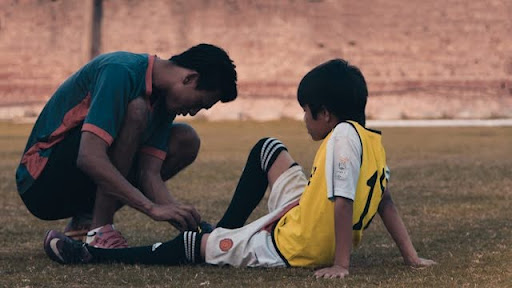Personal injury claims are not limited to accidents that happen in the outside world. Even behind bars, individuals retain certain legal rights — including the right to sue for personal injury if they are harmed due to someone else’s negligence or misconduct. While incarceration limits many aspects of life, it does not strip away the fundamental human right to be free from unnecessary harm. So, can you sue for a personal injury in jail? The answer is yes — but with specific legal complexities and challenges.
This blog explores how personal injury claims work for inmates, the legal obligations of correctional facilities, the types of injuries that can result in lawsuits, and how to navigate the legal system if you or a loved one has suffered injury while in custody.
Legal Rights of Inmates
Prisoners in Canada, and in most democratic societies, do not lose all their civil rights upon incarceration. Though certain freedoms are restricted, inmates are still protected under the Canadian Charter of Rights and Freedoms. This includes the right to:
- Safety and humane treatment
- Adequate medical care
- Freedom from cruel and unusual punishment
- Legal recourse for violations of rights, including personal injury
Correctional institutions and staff have a duty of care toward inmates. If they breach this duty—either through direct action or negligence—and someone is injured as a result, the injured party may have grounds for a personal injury claim.
What Constitutes a Personal Injury in Jail?
Personal injury in jail can occur in many of the same ways as outside prison walls, but it often involves unique scenarios. Common examples include:
1. Assault by Staff or Other Inmates
- If a correctional officer uses excessive force, or if the facility fails to prevent a known threat from another inmate, this may constitute a violation of duty and could be grounds for a lawsuit.
2. Medical Negligence
- Failing to provide timely or adequate medical treatment can lead to severe consequences for an inmate’s health. Delayed diagnosis, improper medication, or refusal of treatment can all lead to liability.
3. Unsafe or Unsanitary Conditions
- Broken flooring, faulty equipment, poor hygiene standards, mold, and pest infestations may lead to slip and fall accidents or health complications.
4. Use of Excessive Force
- Physical abuse, unlawful restraint, or use of tasers and pepper spray without justification may give rise to claims for pain, suffering, and trauma.
5. Inadequate Supervision
- If the jail staff fail to monitor inmates properly and someone gets hurt, either due to violence or self-harm, the facility could be found negligent.
Challenges in Suing While Incarcerated
While it is possible to file a personal injury claim from jail, there are unique hurdles to overcome:
Limited Access to Legal Resources
Inmates often face difficulties accessing legal counsel, documentation, and court forms. Some institutions may have legal aid access, but this is not always sufficient for complex cases.
Timelines and Procedures
The time limit for filing a personal injury lawsuit—known as the statute of limitations—still applies. In Ontario, for example, the typical limit is two years from the date of injury, although this may vary depending on the circumstances.
Proving Liability
Establishing fault in a jail setting can be difficult, especially when the facility controls access to security footage, witness statements, and internal reports. Legal assistance is often necessary to gather and preserve evidence.
Retaliation Concerns
Many inmates hesitate to file claims out of fear of retaliation from staff or fellow inmates. While this is a real concern, legal protections do exist to prevent such retaliation and protect the claimant’s rights.
Filing a Personal Injury Lawsuit from Jail
Filing a personal injury claim while in jail follows a process similar to that of free individuals, but with additional obstacles:
- Seek Medical Attention Immediately
Document all injuries with medical records. These records will serve as key evidence in proving the extent and cause of the injury. - File an Internal Complaint
Before initiating legal action, most correctional systems require inmates to exhaust internal grievance procedures. This shows that you attempted to resolve the issue through official channels. - Consult a Lawyer
It’s essential to seek guidance from a qualified personal injury lawyer who understands how the system works. They can help investigate the case, communicate with the facility, and represent your interests in court. - Gather Evidence
This can include medical records, photographs (if possible), witness statements from other inmates, and reports of prior incidents that establish a pattern of negligence or abuse. - File the Claim
Once your lawyer has gathered sufficient evidence, they will file a claim against the responsible parties. This may include individual officers, the facility, or healthcare providers under contract with the prison.
Who Can Be Sued?
In personal injury cases within correctional institutions, potential defendants may include:
- The provincial or federal government (as the body responsible for the jail or prison)
- Individual correctional officers or staff members
- Private contractors (such as healthcare providers)
- Third-party service providers (e.g., cleaning or maintenance crews)
The liability may be shared depending on the nature and cause of the injury.
What Can You Be Compensated For?
If your claim is successful, compensation may cover:
- Medical expenses (including ongoing care)
- Pain and suffering
- Loss of enjoyment of life
- Emotional distress
- Punitive damages (in cases of gross negligence or abuse)
While financial compensation cannot undo the harm, it can provide a sense of justice and support recovery.
Why Legal Representation Is Critical
Navigating a personal injury lawsuit from behind bars is no easy feat. The complexity of the legal system, the power imbalance between inmate and institution, and the potential for evidence suppression all highlight the importance of skilled legal representation.
A knowledgeable lawyer can help level the playing field by:
- Investigating the incident thoroughly
- Handling communication with authorities
- Filing legal documents accurately and on time
- Advocating for your rights and fair compensation
Working with a legal professional like a Mcnally Gervan personal injury lawyer ensures that your claim is taken seriously and handled with the diligence it deserves.
Conclusion
Injured inmates do not lose their right to justice. Despite the limitations of life behind bars, the law still protects those who have been harmed due to negligence, abuse, or dangerous conditions. If you or a loved one has suffered a personal injury while incarcerated, you have the right to seek legal action and pursue fair compensation.
While the road may be challenging, justice is still within reach. With the support of a dedicated legal advocate and a firm understanding of your rights, you can take the necessary steps to hold the responsible parties accountable — even from behind bars.









